Henry VIII is famous for a few things. He was the King to bring the religious reformation to England and the one to have six wives. Because of King Henry VIII, the first Queen of England was executed for treason and one of the greatest monarchs of all time sat on the throne. There is a lot to cover about Henry VIII and his six wives and this is just the start!

Henry VIII: The King with Six Wives
King Henry VIII is well-known for two things: his six wives and the religious reformation. How much do you really know about him?
The Birth of Henry VIII
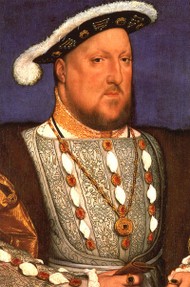 When Henry Tudor was born, he was the second son and not destined for the throne. He was the son of King Henry VII of England and Elizabeth of York and given the title Duke of York. It wasn’t until 1502, when he was just 10 years old that he found himself second in line to the throne. Prince Arthur had died, possibly of the sweating sickness, six months into his marriage to the young Princess Catherine of Aragon.
When Henry Tudor was born, he was the second son and not destined for the throne. He was the son of King Henry VII of England and Elizabeth of York and given the title Duke of York. It wasn’t until 1502, when he was just 10 years old that he found himself second in line to the throne. Prince Arthur had died, possibly of the sweating sickness, six months into his marriage to the young Princess Catherine of Aragon.
Historians believe that Henry was attractive in his youth. He was certainly athletic and it was only when his illnesses became a problem that he gained so much weight. The problem is, the only definite portraits around that those painted by Hans Holbein the Younger when Henry VIII was the aged, obese tyrant that he is well-known as being. Unlike his brother, Henry had the charisma and charm that a King of England needed.
While he was originally raised for a career in the clergy, Henry VII found that he had to change courses for his now-heir to the throne. Not wanting to lose Catherine of Aragon’s dowry, Henry VII sought a papal dispensation from the Pope, which was granted after Catherine swore on oath that she had not consummated her marriage to Arthur Tudor. Prince Henry did not marry his bride until after his father’s death in 1509. Henry and Catherine were crowned together on June 24, 1509 after their marriage 13 days earlier.
Learn More About Henry VIII
 |  |  |
| Henry VIII: The King and His Court | The Six Wives of Henry VIII | Henry VIII (Folger Shakespeare Library) |
The Six Wives of Henry VIII
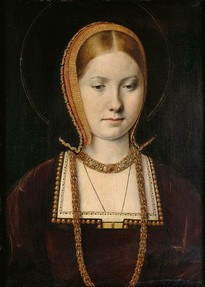 Henry VIII is notorious for his six wives. They are regularly remembered with the saying “divorced, beheaded, died; divorced, beheaded, outlived”. Five of those marriage took place during the last 14 years of his reign and the saying isn’t quite true.
Henry VIII is notorious for his six wives. They are regularly remembered with the saying “divorced, beheaded, died; divorced, beheaded, outlived”. Five of those marriage took place during the last 14 years of his reign and the saying isn’t quite true.
In reality, the two divorces were actually annulments; and in truth, four of his marriages were annulled. The break from the Catholic religion occurred because Henry VIII wanted to divorce Catherine of Aragon and marry his second wife, Lady Anne Boleyn. It isn’t just because he was in love with another woman. Henry had had many mistresses before – two who are known about are Bessie Blout (the mother of Henry Fitzroy) and Mary Boleyn (Anne Boleyn’s sister).
Henry believed that his marriage to Queen Catherine was invalid in the eyes of the Lord. He regularly used the verse from Leviticus: “If a brother is to marry the wife of a brother they will remain childless”. While the marriage to Catherine wasn’t exactly childless – they had children but only Princess Mary Tudor survived into adulthood – Henry believed that the lack of an heir was a sign from God. He believed that Catherine’s marriage to his brother had been consummated and the two should never have married.
It just so happened that this coincided with his infatuation for Anne Boleyn. Anne was the daughter of a nobleman at Henry VIII’s court, Thomas Boleyn, and refused to become his mistress. The only way that Anne would agree to lie with the King was if she was Queen of England. Whether Henry was in love was another matter but it took him seven years to annul his marriage to Catherine to marry Anne.
Henry VIII Starts the Religious Reformation
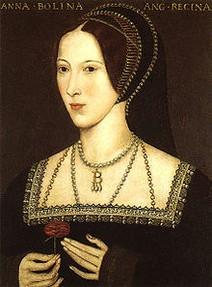 Henry tore the country apart. He sought advice from a new man rising in court, Thomas Cromwell. Cromwell was an ambitious man – for power and religion. Cromwell wanted the English people to adopt the Protestant beliefs, although Henry found these beliefs heresy. It was only when Cromwell pointed out that the Pope was not above a King and Kings could have a direct relationship with God that Henry VIII saw his path. He introduced the protestant religion and became the Head of the Church of England.
Henry tore the country apart. He sought advice from a new man rising in court, Thomas Cromwell. Cromwell was an ambitious man – for power and religion. Cromwell wanted the English people to adopt the Protestant beliefs, although Henry found these beliefs heresy. It was only when Cromwell pointed out that the Pope was not above a King and Kings could have a direct relationship with God that Henry VIII saw his path. He introduced the protestant religion and became the Head of the Church of England.
This meant that he could have his marriage to Catherine of Aragon annulled – their daughter becoming illegitimate – and his marriage to Anne Boleyn made valid.
After three years, Henry grew tired of Anne Boleyn, and Thomas Cromwell wanted to remove her and her faction from court. Henry VIII laid eyes on Jane Seymour and wanted to marry her. Not wanting the problems he faced three years early, Cromwell ensured that Anne would be completely removed – she was found guilty of treason, adultery and incest, and was executed. Days before her execution, the marriage to Henry was annulled.
A Quick Overview of Henry VIII's Six Wives to ABBA's "Money, Money, Money"
Henry VIII Needs an Heir to the Throne
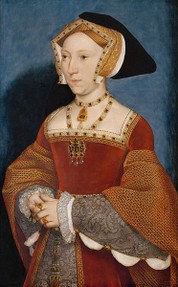 Unfortunately for Henry VIII, his marriage to Jane, which took place 11 days after the execution of Anne Boleyn, did not last for very long. By October 1537, she had given birth to Henry’s first heir to the throne, Prince Edward Tudor, but died of childbed fever about two weeks later. Henry went into a state of mourning for the woman who had provided him with his heir. It is unclear if he was even in love with Jane, though, or whether he was just eternally grateful for her sacrifice.
Unfortunately for Henry VIII, his marriage to Jane, which took place 11 days after the execution of Anne Boleyn, did not last for very long. By October 1537, she had given birth to Henry’s first heir to the throne, Prince Edward Tudor, but died of childbed fever about two weeks later. Henry went into a state of mourning for the woman who had provided him with his heir. It is unclear if he was even in love with Jane, though, or whether he was just eternally grateful for her sacrifice.
It took three years for Henry VIII to agree to marry again. This time to Anne of Cleves. She was a German princess, in a country that was devoutly Protestant. This was a benefit for Thomas Cromwell and Thomas Cranmer, the Archbishop of Canterbury, who both wanted to see the religious reformation continue. Henry sent Hans Holbein the Younger to paint a portrait of the German princess, which he liked at first, and agreed to marry her. However, he was disappointed upon the first meeting.
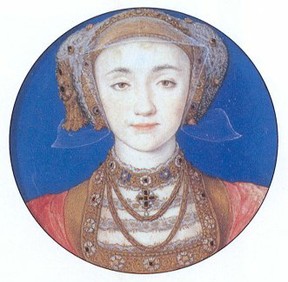 He stated to Cromwell “I like her not” after first seeing her. The marriage was a disaster from the start and lasted six months – without being consummated. Anne of Cleves was offered the chance to remain in England as the King’s Sister as long as she agreed to the annulment. This was the first marriage that Henry VIII had grounds to annul. Anne of Cleves had been previously betrothed, which was as good as marriage in the 16th century; she was not available for Henry VIII to marry. Anne agreed to the annulment and ended up being a close friend to King Henry.
He stated to Cromwell “I like her not” after first seeing her. The marriage was a disaster from the start and lasted six months – without being consummated. Anne of Cleves was offered the chance to remain in England as the King’s Sister as long as she agreed to the annulment. This was the first marriage that Henry VIII had grounds to annul. Anne of Cleves had been previously betrothed, which was as good as marriage in the 16th century; she was not available for Henry VIII to marry. Anne agreed to the annulment and ended up being a close friend to King Henry.
Henry VIII Meets His Rose Without a Thorn
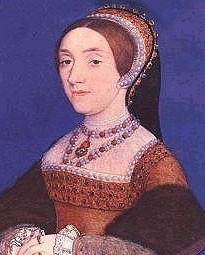 Henry VIII became infatuated with one of Anne of Cleves ladies-in-waiting – a lady who just happened to be Anne Boleyn’s cousin! – Katherine Howard. Katherine was only around 19 when the King started sending her gifts and decided that he wanted to marry her. She was the least educated of all of Henry’s wives and was naive in the world.
Henry VIII became infatuated with one of Anne of Cleves ladies-in-waiting – a lady who just happened to be Anne Boleyn’s cousin! – Katherine Howard. Katherine was only around 19 when the King started sending her gifts and decided that he wanted to marry her. She was the least educated of all of Henry’s wives and was naive in the world.
Henry called Katherine his rose without a thorn. She was a breath of fresh air for him. Her youthfulness helped him forget about his old age and brought excitement back into his life. The problem was that Henry was extremely obese and often ill by this point in his life. He was impotent and it caused problems for Katherine. She had an affair and the truth of a previous relationship with a man named Francis Dereham came to light.
Henry VIII held a trial and found out that his rose had been having an affair with a trusted member of the Privy Chamber, Thomas Culpepper. There were actually grounds for annulment since Katherine had had intercourse with Francis Dereham and they often referred to each other as husband and wife. Unfortunately, Katherine did not admit to this and she found herself executed on February 13, 1542.
Henry VIII Places Mary and Elizabeth Back in Line of Succession
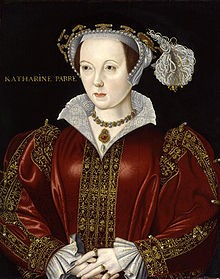 While his pride was hurt, Henry was on the lookout for another wife. This time his eyes fell on Lady Catherine Parr. The problem for Henry was that she was currently married to Lord Latimer but his health was deteriorating. Catherine had actually been married once before Lord Latimer but never had children of her own. She did however care for her step-children and Henry VIII realised that there was someone who could look after his own children after his death.
While his pride was hurt, Henry was on the lookout for another wife. This time his eyes fell on Lady Catherine Parr. The problem for Henry was that she was currently married to Lord Latimer but his health was deteriorating. Catherine had actually been married once before Lord Latimer but never had children of her own. She did however care for her step-children and Henry VIII realised that there was someone who could look after his own children after his death.
It was because of Catherine that the Ladies Mary and Elizabeth (Anne Boleyn’s daughter) were placed back in line of succession after both being removed after the annulments of Henry’s marriages to their mothers. Jane Seymour had managed to bring Mary and Henry closer but this was the first time that he seriously thought about making them possible Queens should Edward Tudor not have heirs of his own. The details of the succession were published in his will and helped support Mary Tudor when Edward VI removed her from the line of succession and placed Lady Jane Grey on the throne.
Catherine was also a sympathiser of the reformers and wanted to help move the country into the Protestant ways. Her views and debates with Henry VIII almost meant that she lost her head. Henry was a proud man and she often debated while caring for the ulcers on his legs. She played to Henry’s pride though and apologised, asking for him to teach her. This obviously helped as Catherine was saved from death and became the guardian of Lady Elizabeth.
The Complete Story of the Tudor Dynasty
 |  |  |
| The Tudors: The Complete Story of Eng... | Tudors: The History of England from H... | The Tudor Plot: A Cotton Malone Novella Only $2.99 |
Henry VIII’s Finances and Wars
Henry VIII has a great reign to follow from. Henry VII had turned the country from war-torn and on the brink of poverty, to one that the people could be proud of being a part in. The finances were in an excellent state for when Henry VIII took the throne but he spent much of them in the early part of his reign on wars and personal items. The country was back on the brink of poverty.
He did have financial advisors at the start of his reign, the most notable being Cardinal Thomas Wolsey, but by the end he had complete control of how the money was spent. Some of that money was spent on wars with France and Scotland. The first of the wars was in 1513 with France, as a way to expand the holdings that England already had. France had a good relationship with James IV of Scotland and had Scotland invade England to draw attention away from the struggling country. However, Henry VIII continued on in France while Catherine of Aragon, who had been left as Queen Regent, led the army north to protect England from Scotland. Henry and Catherine both succeeded.
The only other time that Henry trusted the country to one of his wives was when Henry went to war with France again later in his reign. This time Catherine Parr was left as Queen Regent – luckily for her, Scotland didn’t try to invade again!
1 of 4 of Six Wives of Henry VIII Documentary
The Death of Henry VIII
Henry VIII died on January 28, 1547. While the cause of death is unknown, it is linked to his obesity. He also suffered from gout in his later years and was possibly Type II diabetic. He was buried next to his third wife, Jane Seymour.
As well as detailing Mary and Elizabeth’s inclusion for the throne, Henry VIII detailed how Mary Tudor, Queen of France’s descendants would then gain the throne. Mary was Henry’s younger sister. He had excluded the descendants of his older sister, Margaret Tudor, since she had married into the Scottish royal family. Henry did not want the English crown to be passed onto the Scots.
You might also like
England Under the Tudors: Would King Edward VI Have Been a Goo...Edward VI reigned between 1547 and 1553 when he was just a boy. It's hard to ...
Lady Jane Boleyn: Vindictive Woman or Pawn in a Plot?Jane Boleyn is known for her part in bringing down the Boleyn faction. How mu...
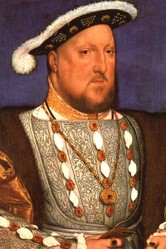


 Alternate History: What If Mary I Had a Child?on 01/26/2015
Alternate History: What If Mary I Had a Child?on 01/26/2015
 Francis II of France Dies: Mary, Queen of Scots Returns Homeon 12/05/2014
Francis II of France Dies: Mary, Queen of Scots Returns Homeon 12/05/2014
 Does Writedge Pay? Payment Proofon 12/03/2014
Does Writedge Pay? Payment Proofon 12/03/2014
 Alternate History: What If Lady Jane Grey Was Not Deposed?on 11/11/2014
Alternate History: What If Lady Jane Grey Was Not Deposed?on 11/11/2014

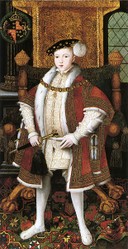
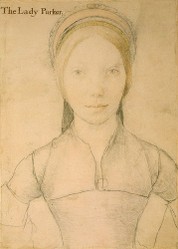
Comments